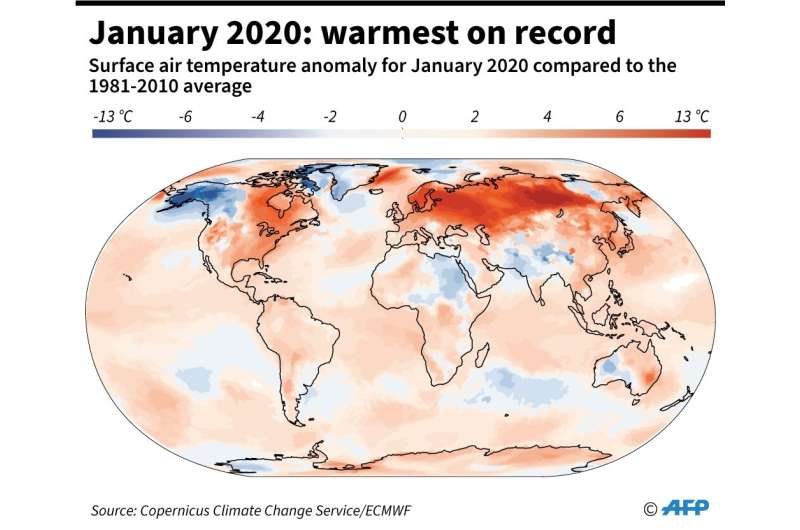Northern Hemisphere faces 4-fold rise in extreme heat periods: study

The number of extreme hot days and nights in the Northern Hemisphere could quadruple by the end of the century even if humanity brings down emissions to meet the Paris climate deal goals, scientists said Tuesday.
So-called compound hot extremes, 24-hour periods where daytime and nighttime temperatures stay exceptionally high, pose a significant risk to human health as the body doesn't get a chance to cool off after the Sun sets.
Researchers in China analysed temperature data from the Northern Hemisphere—home to 90 percent of humanity—stretching back to 1960.
They found a clear upward trend in the frequency and intensity of compound hot days and nights, defined as days in which the temperature high and low were both in the top 10 percent of those registered between 1960-2012.
They then used region-specific temperature data to model the potential number—and ferocity—of heat extremes going forward.
Even if greenhouse gas emissions are brought in line with the goals of the landmark Paris accord, which aims to cap global warming below two Degrees Celsius (3.6 Farenheit), the team found that such exceptionally warm 24-hour periods were likely to quadruple by 2100.
This equates to a rise of human exposure to compound hot extremes from 19.5 billion person-days last decade to around 74 billion days in the 2090s, the researchers said.

'Clear connection' with manmade emissions
"This shows us this overlooked type of hot extreme is increasing significantly in frequency and intensity," said study authors Yang Chen from the Chinese Academy of Meteorological Sciences and Jun Wang from the Institute of Atmospheric Physics.
"These increasing trends are likely to continue and even accelerate in the future."
The team also confirmed a "clear connection" between manmade emissions and the increase in compound hot extremes, they told AFP.
The team plans further research on whether or not urban populations may be especially vulnerable to the risks posed by extreme hot daytime and nightime temperatures.
But they acknowledged the potential impact of the Urban Heat Island (UHI) effect, which occurs when cooling parks, dams and lakes are replaced by heat-conducting concrete and asphalt—making cities warmer than their surroundings.
By mid-century alone the United Nations predicts that two-thirds of humans will live in cities.
"These compound hot extremes are particularly health-damaging because they leave little chance for humans to recover throughout the event," said the authors of the study, published in Nature Communications.
They called on health authorities to increase vigilance measures to cover nightime as well as day during periods of extreme heat.
More information: Anthropogenically-driven increases in the risks of summertime compound hot extremes, Nature Communications (2020). DOI: 10.1038/s41467-019-14233-8 , nature.com/articles/s41467-019-14233-8
Journal information: Nature Communications
© 2020 AFP



















